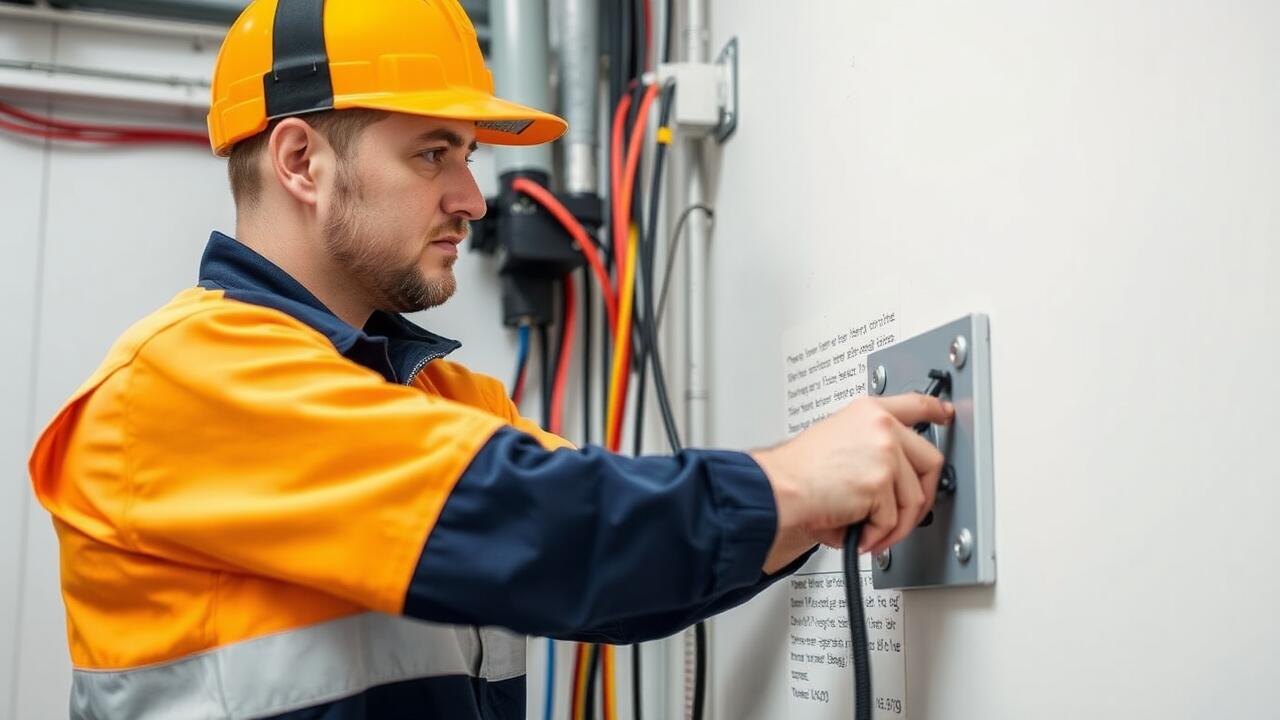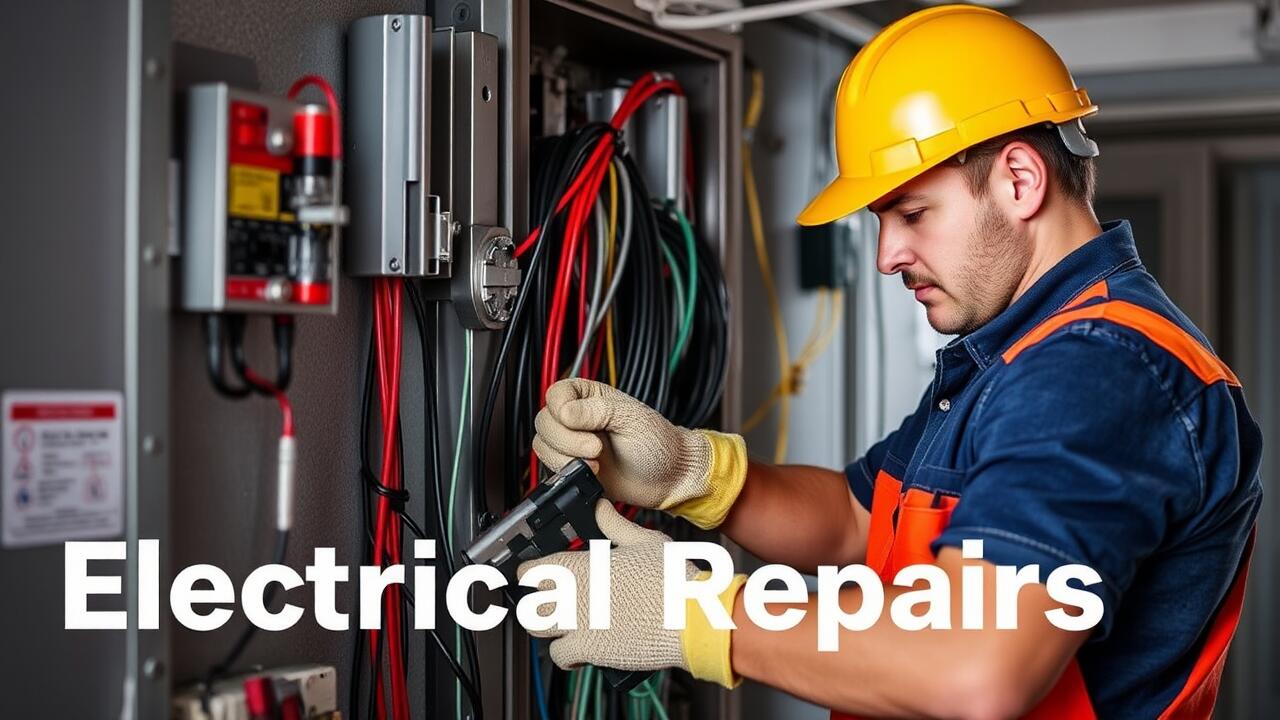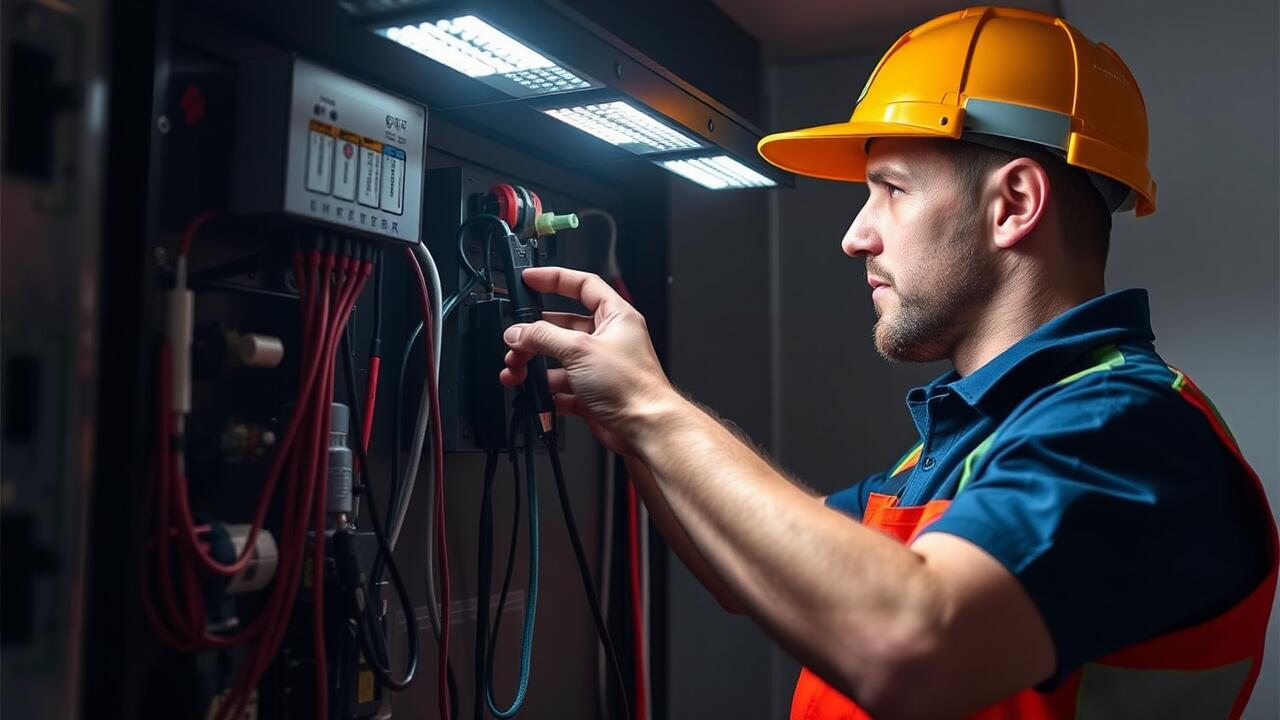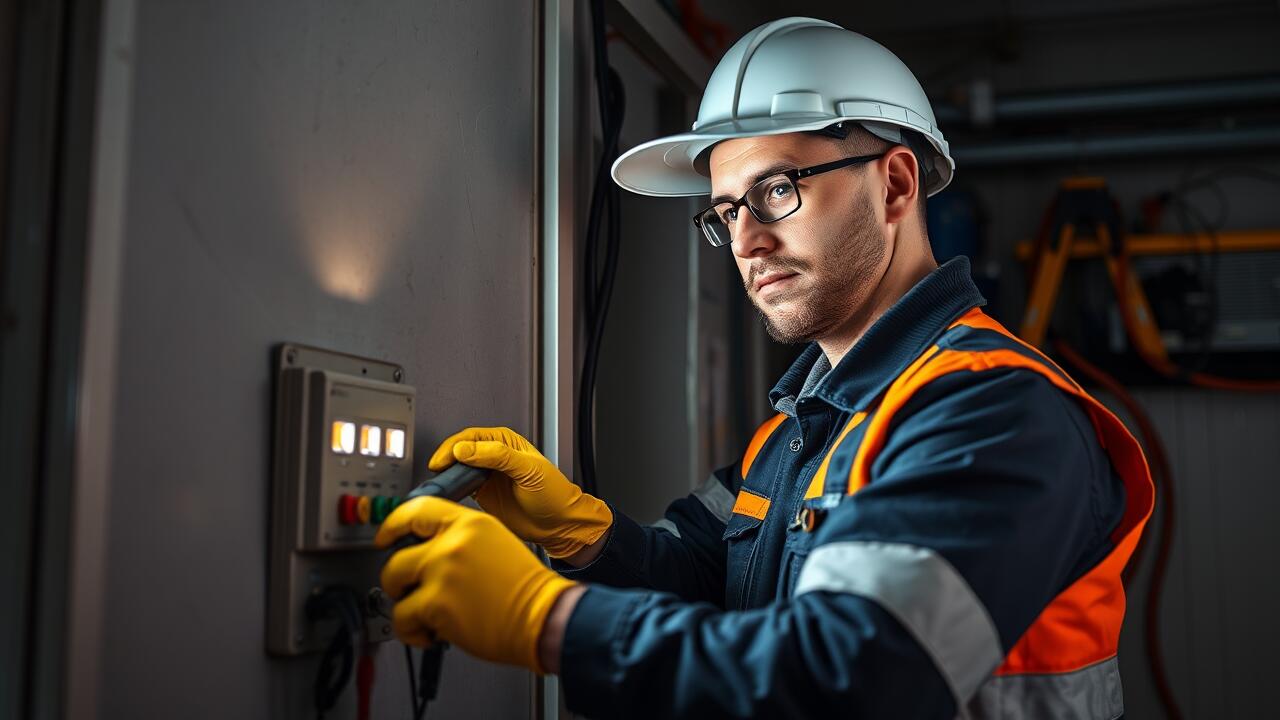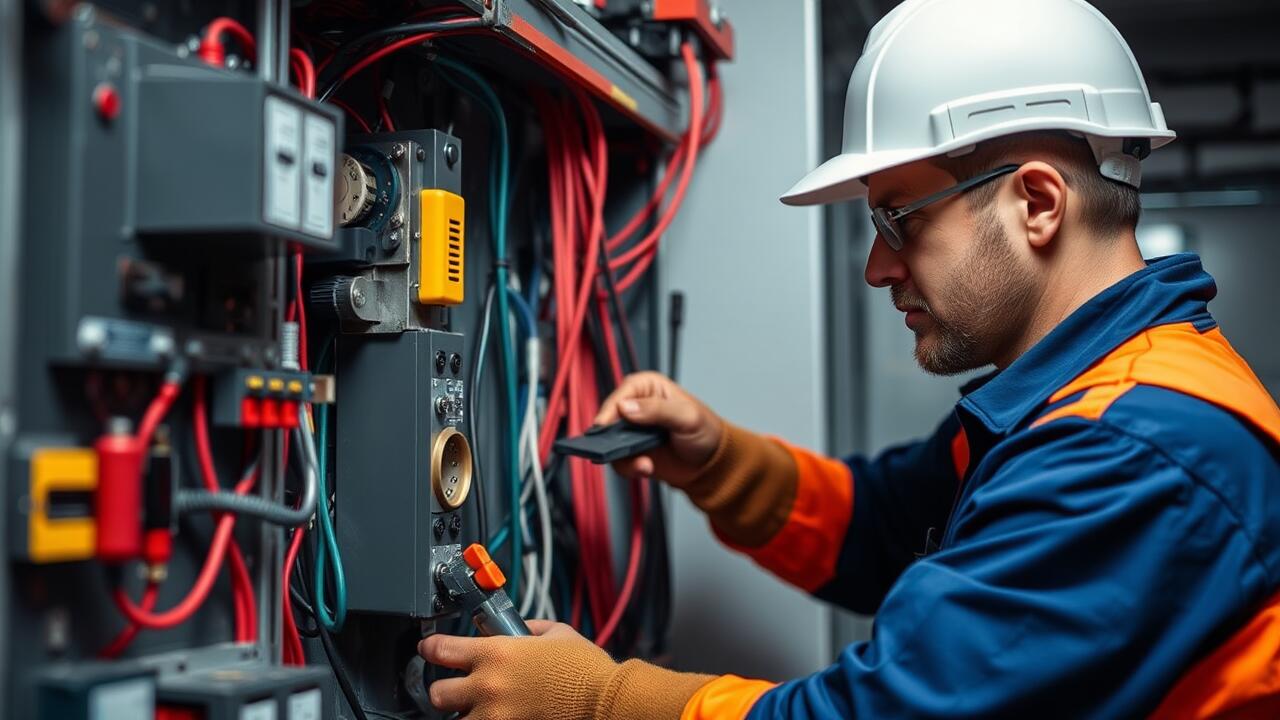
Preparing for the Replacement Process
Before beginning the replacement process, it is crucial to assess the extent of the wiring damage. Inspect the affected areas carefully and determine whether the repair can be handled independently or if professional assistance is necessary. If you’re uncertain about your skill level or the complexity of the task, searching for "Electrical Repairs near me" can help you find qualified technicians in your area.
Gathering the right tools and materials is essential for a smooth replacement process. Ensure you have wire strippers, electrical tape, connectors, and the correct type of replacement wiring. Taking the time to prepare your workspace can significantly impact the efficiency of your repair. A clean and well-organized area will minimize distractions and enhance your focus while working.
Safety Precautions and Shutdown Procedures
Before beginning any electrical work, it is crucial to prioritize safety and ensure all precautions are in place. Begin by shutting off the power at the main circuit breaker or fuse box, which serves as the first step in preventing electrical shocks. Use a voltage tester to confirm that the wiring is not energized before proceeding. Wearing insulated gloves and safety glasses is also advisable to protect against potential hazards.
Additionally, it is wise to create a comfortable workspace that is free from clutter and distractions. If you are unsure about how to safely perform wiring repairs, seeking assistance from professionals who specialize in electrical repairs near me can provide valuable guidance and peace of mind. Always follow local regulations and codes to ensure compliance and safety during the replacement process.
Step-by-Step Guide to Replacing Wiring
Gather the necessary tools and materials before beginning the wiring replacement. Basic tools include a wire stripper, screwdriver, electrical tape, and a voltage tester. Ensure that you have replacement wire that meets local codes and specifications. Familiarize yourself with the layout of the existing wiring to avoid confusion during the replacement process. If you feel unsure at any point, consider searching for "Electrical Repairs near me" to obtain professional assistance.
Begin by cutting the power supply to the circuit you will be working on. Use a voltage tester to confirm that the wires are not live before proceeding. Carefully remove the damaged wiring and strip the ends of the new wire for proper connections. Securely attach the new wiring to the junction points, ensuring that all connections are tight and insulated with electrical tape. After the connections are made, double-check everything before restoring power to the circuit.
Detailed Instructions for a Successful Replacement
Before starting the replacement, gather all necessary tools such as wire strippers, a screwdriver, and electrical tape. Make sure to turn off the power supply to avoid any accidents. Carefully remove the damaged wiring by unscrewing the connectors and using wire cutters. If the damaged section is not easily accessible, you may need to open walls or ceilings for a thorough inspection. Label the existing wires to remember their connections, especially if multiple wires are present.
Once the old wiring is removed, measure and cut new wiring to the required lengths. Strip the ends of the new wires to expose the copper. Connect the new wires by twisting them together with the corresponding old wires and securing them with wire connectors. Ensure that you wrap electrical tape around the connections for added safety. If you're uncertain about the steps or need assistance, searching for "Electrical Repairs near me" can help you find qualified professionals to ensure the job is done correctly.
Testing the New Wiring After Replacement
After completing the wiring replacement, it is crucial to properly test the new setup to ensure safe and efficient operation. Start by inspecting all connections for tightness and proper insulation. Use a non-contact voltage tester to verify that there is no residual voltage in the circuits before powering them back on. Ensure that all switches and outlets are secure and functioning correctly. Testing equipment such as a multimeter will help measure voltage, current, and resistance, providing further assurance of safety and compliance with electrical codes.
Once the initial visual inspection is complete, restore power to the circuit and conduct a series of function tests. Check that all devices connected to the new wiring are operational and that there are no unusual sounds or scents, which may indicate underlying issues. If any problems arise, consider seeking assistance from professionals specializing in electrical repairs near me to guarantee thorough troubleshooting and repair. This extra step will enhance safety and reliability in your electrical system.
How to Ensure Safe and Proper Functionality
After replacing damaged wiring, testing is crucial to ensure safety and proper functionality. First, visually inspect all connections to confirm that they are secure and properly insulated. Turn on the power and use a multimeter to check for continuity and proper voltage levels at various points in the circuit. If issues arise during the testing, troubleshooting should begin immediately.
If you encounter persistent problems or feel unsure about the safety of your work, seeking professional help is advisable. Many local services offer expertise in this area. Searching for “Electrical Repairs near me” can connect you with qualified technicians who can assess the situation and complete any necessary repairs. This will give you peace of mind, ensuring that your wiring is safe and compliant with local electrical codes.
FAQS
What are the common signs that indicate wiring needs to be replaced?
Common signs include flickering lights, frequent circuit breaker trips, burning smells, discoloration around outlets, and exposed or frayed wires.
How do I safely shut down power before replacing wiring?
To safely shut down power, turn off the main circuit breaker or switch off the specific circuit breaker that controls the damaged wiring. Always use a voltage tester to confirm that the power is off before beginning work.
Do I need special tools to replace damaged wiring?
Yes, you will typically need tools such as wire cutters, wire strippers, a screwdriver set, a voltage tester, and electrical tape. Depending on the job, you may also require a drill or a fish tape for guiding wires through walls.
Can I replace wiring on my own, or should I hire a professional?
If you have experience with electrical work and are knowledgeable about safety precautions, you can attempt to replace wiring on your own. However, if you are unsure or inexperienced, it is best to hire a licensed electrician to ensure safety and compliance with local codes.
How can I test the new wiring after replacement to ensure it's functioning properly?
After replacing the wiring, restore power and use a voltage tester to check for proper voltage at outlets. You can also plug in a device to ensure it operates correctly. Additionally, check for any unusual sounds or smells that may indicate issues.
